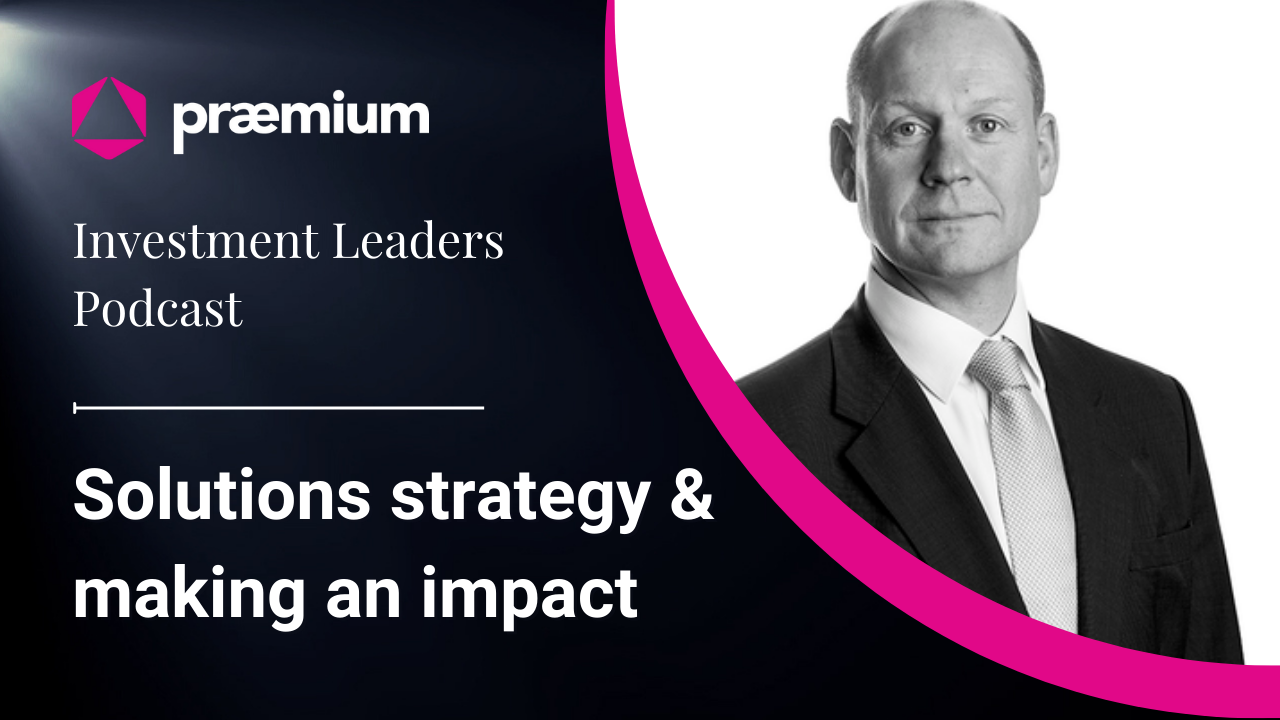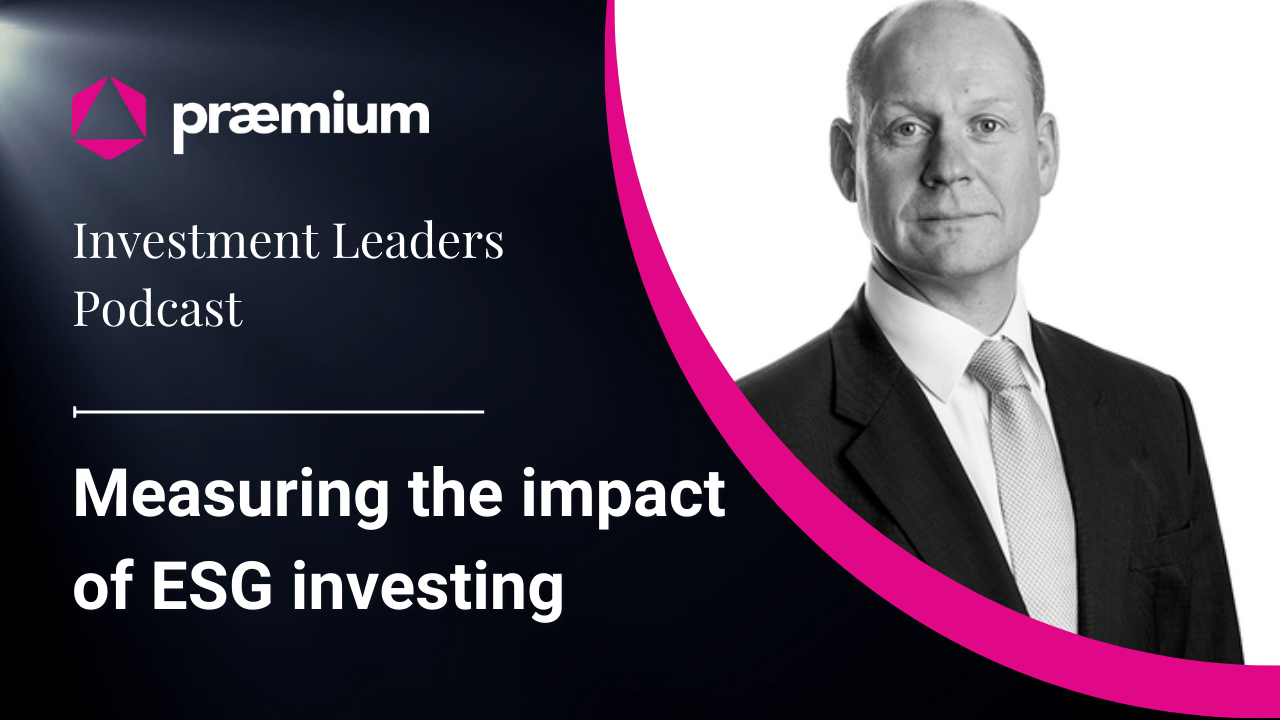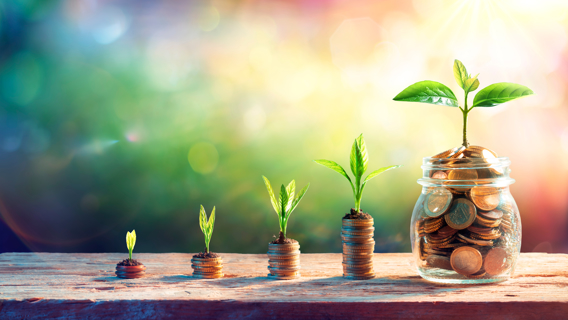Please note that this interview transcript has been edited for clarity and brevity.
Damian Cilmi: Welcome to the Praemium Investment Leaders Podcast. I'm Damian Cilmi, Head of Investment Managers and Governance with Praemium, one of Australia's fastest-growing platforms. Today we have Andy Raikes from TT International, co-portfolio manager for TT's Environmental Solutions Strategy and Head of European Research. TT International is a specialist, high alpha equities global asset manager with a focus on style agnostic, high conviction investing. The group manages over 10 billion in funds under management, and the TT Global Environmental Impact Fund is distributed in Australia by Copia Investment Partners. Andy, welcome to the show.
Andy Raikes: Thank you very much. Great to be here.
Damian Cilmi: Let's get into it, starting with some context. There's many terms and many acronyms out there, and I think you've added another one to the lexicon, because you call this a “solution strategy”. So, what do you mean by this?
Andy Raikes: Sure, our solution strategy means we only invest in companies that have a product or service solving an environmental problem. We're not a low carbon or transition strategy, so we don't invest in big tech or big oil, even if they have a low carbon footprint or invest heavily in renewables. We focus on companies making a significant contribution to solving environmental problems. Our pure play strategy invests at least 80% of our capital in companies where the product or service solving the environmental problem is the majority of their business, at least 50% of revenue or profit. The remaining 20% is reserved for companies where their product or service is making a significant contribution but is not yet the majority of their business. We hope and expect that in time, this smaller part of their business will grow to become a bigger part because it's likely to be a fast-growing part of their business as they solve environmental problems.
Damian Cilmi: Okay, let's get onto the problems. Can you discuss the seven environmental problems you've identified for your strategy? And do you seek equal allocation across those issues?
Andy Raikes: Sure. We've identified seven themes: clean energy, water, forestry and agriculture, responsible consumption, clean transport, recycling in the circular economy, and electrification energy and industrial efficiency. We chose these themes because they address a wide range of some of the most pressing environmental issues out there. They cover both areas like climate change and broader nature areas and biodiversity, which we think are mutually reinforcing. It's not an exhaustive list of every environmental problem out there, but for us, those are the seven key themes addressing seven significant problems.
Damian Cilmi: And responsible consumption as well would feed into that too.
Andy Raikes: Yeah, so the more obvious investment themes that address climate change would be things like clean energy and clean transport. However, themes like responsible consumption, recycling, and circular economy, as well as forestry and agriculture, play a different role. Biodiversity is an area where it's harder to identify investment themes, but our ecologist strongly believes that the biggest negative impact on biodiversity comes from mass agriculture. Therefore, finding ways to do agriculture more efficiently, such as using less land, water, herbicides, pesticides, and fertilizers, would have a good broad environmental outcome, particularly for biodiversity. So, these themes address broader nature areas rather than just climate change.
Damian Cilmi: Yeah, I think you're right. It's quite refreshing to see that this has got other legs to it as well. So, I'm curious about the seven themes that you've identified. Do any of those objectives conflict with each other?
Andy Raikes: I don't think these themes conflict in many ways, they're more complementary. The themes of biodiversity and climate change are very interlinked, as they're mutually dependent and reinforcing. For instance, climate change leads to damage to ecosystems, causing them to lose their ability to sequester carbon, leading to more climate change. We believe these themes are very interconnected, and in many cases, we find stocks that span across several different themes. So, there are no competing objectives, and we have debates as to which sector they should go in, which themes they should go in.
Damian Cilmi: So, can you talk a bit about what the advisory board is discussing beyond the seven environmental problems that you've identified? What are some emerging ideas or areas of interest that they're bringing up?
Andy Raikes: When we launched the strategy, we were aware that the technological, regulatory and policy landscape in this space is constantly evolving. So, having an independent advisory board helps us stay on top of those trends. The board's role is to bring insights into their areas of expertise and, equally importantly, to challenge the investment team on the positions we have in the portfolio.
Our advisory board is made up of experts across policy, technology, ecology, and green finance. They bring insights into their areas of expertise and challenge our investment team on the positions we hold in the portfolio, ensuring they align with the fund's environmental objectives. Dr. Ju Ma is our policy expert, and we've had a lot of discussions with him about environmental policy coming out of China and its impact on the economy. Joe Bull, our ecologist, specializes in the impact of economic development on biodiversity and mass agriculture. James Brown, our technology expert, recently took us through a case study on the process of getting a wind farm from concept to operation, giving us practical insight into the steps involved. Nuclear energy has also been a topic of discussion, and after debating with the board, we all agree that nuclear is an environmental solution. However, it's hard to find investable ideas in the nuclear space, so we currently have no exposure there.
Damian Cilmi: It's definitely a big piece that people are working through now. You touched on China and emerging markets, which is important because a lot of strategies out there are very developed market focused. So, do you think you have a better handle on the emerging markets sphere?
Andy Raikes: Definitely. I mean, I think for us, when Harry and I were designing the product, we always felt that having a good exposure to, or at least good capability to invest in, emerging markets was really important. And the reason that that is the case is because so much of the important technology areas of development in a lot of the environmental space is happening in emerging markets. For example, pretty much 100% of the global solar value chain comes out of China. Pretty much 100% of the global EV battery chain comes out of Northern Asia in one form or another. So, if you're not investing in emerging markets, you're not capturing a lot of that.
And the other aspect of why we think emerging markets are important is that they have a lot of the best renewable assets around the world. So, if there are wind farms and solar farms, they tend to be often in emerging markets. They might be in South America, or they might be in the Indian subcontinent, for example. Often if we're investing in a renewable generating company, their assets may actually be in an emerging market. So, for us, having an understanding of the local dynamics in that market is very important.
But crucially, we're also aware of some of the pitfalls that can come with investing in emerging markets in certain countries that can have elevated governance concerns, for example. So, for us, we think we're very well placed to invest in emerging markets. Emerging markets are the biggest part of TT's business, by far the largest piece of our assets under management. We have a very large and successful emerging market strategy with a very strong investment team.
We have the capability and expertise to invest in emerging markets, and we're doing it with that resource, able to be very eyes wide open about the potential pitfalls and risks in emerging markets and be on top of them. Importantly also, we have four analysts based out of our Hong Kong office, three of whom just look at China. China is a very important market for us, and we definitely feel at all times we want to balance the opportunities in China with some of the negatives around China, such as potentially elevated geopolitical risk. Having that dedicated resource, three analysts just looking at China based in Hong Kong, we think is incredibly important. It would totally lack credibility if we were doing that from London.
Damian Cilmi: Let's talk about data and measurement, which I think is an interesting topic. People are asking about outcomes and proof of impact of strategies. Before we get into measurement, can you tell us how you collect relevant data and how much effort is involved?
Andy Raikes: It's a great question, and I think it's important to discuss because measuring and quantifying impact is not an easy task, especially in the context of buying and selling secondary market equities. Claiming that we're saving a specific number of tons of carbon by investing in a particular company is a tenuous claim. However, we do have a direct impact by participating in primary capital raisings and follow-on capital raises for listed companies that are raising funds to accelerate their environmental investments. This is a significant way to accelerate the green transition and has a positive impact. It's difficult to measure this impact precisely, but we know that we are contributing to it.
One of the ways we measure our impact is through the concept of avoided emissions, although there are caveats to this data. We put effort into scrutinizing the methodology and ensuring that it is logical. We aggregate this data and look at measuring not just the carbon emitted but also the carbon footprint of our fund and the avoided emissions. We invest in companies that solve environmental problems, and many of these companies have a carbon footprint. Therefore, we're not always the lowest carbon fund, but we're confident that we're contributing to a significant net environmental gain. For example, insulation is a fascinating theme. Buildings account for about 30% of global emissions, mostly from heating and cooling. Proper insulation is a cost-effective way to significantly reduce emissions, but the production process can be energy-intensive. Rockwall makes stone wool insulation, which is highly energy-intensive. However, an independent management consultant calculated that the carbon saved over the product's life is 100 times more than the carbon emitted in the production process.
Damian Cilmi: And so, what's the lifespan on that kind of insulation?
Andy Raikes: Off the top of my head, I'm not sure of the exact life cycle they used for stone wool insulation, but I would guess it's around 20-30 years. Roughly half the companies in our portfolio have disclosed avoided emissions numbers, and if we compare that data to the carbon emitted data for 100% of our portfolio, we find that the carbon saved is 23 times the carbon emitted across our companies. These numbers are self-disclosed, so there can be some debate around them, but directionally it's clear that the carbon saved is significant.
Damian Cilmi: And is the quality of disclosure and data provided by companies that has been getting better over time?
Andy Raikes: The quality of data in the environmental space is improving, partly because companies recognize the need for it and partly because investors like us are putting pressure on them to disclose more. Emerging market companies may be further behind in terms of disclosure compared to developed market companies, and we spend time engaging with them to get them to improve it. This is often in their best interest because they have good data and a good story to tell, but they may not have done the analysis or published the data. It's a softer area of engagement, but we've had success in persuading these companies to improve their disclosure.
Damian Cilmi: This has been an interesting discussion and it may warrant a follow-up. I'd like to focus on a unique aspect of your business strategy, which is the donation of one-third of investment management fees to environmental causes. Can you explain how this idea came about, how you choose the causes, and what kind of outcomes you have seen from this program?
Andy Raikes: Yes, well, it really came about going back to the conversation we were just having about impact as well. So, acknowledging what I was saying about buying and selling secondary market equities, and the potential claims around having impact there can be a bit tenuous. We wanted to have a charitable donation, which can have clear, irrefutable, direct impact. You were talking about measuring impact, and that's something very clear that we can measure. We know exactly how much we have given to these charities. By the end of this month, we think that figure will have gone up to about half a million dollars that we will have given to environmental charities aligned with the principles of the fund. If we're successful in scaling the fund to where we think we can, that will be a significant annual annuity in terms of charitable donations that are having real direct impact.
We have an internal charity committee that does a lot of due diligence looking at potential charities and where the most impactful donations can be given. One of the other things is we are looking to align our charitable donations that are relevant to our investors. Australia is a really important market for us. We recognized that early on in the strategy, so we have deliberately chosen one of our charitable partners, which is the University of Western Australia Ocean's Institute, an Australian charity that does marine research.
Our donations are actually going to make a difference, so we select charities where we can have an impact. We don't necessarily want to be investing in the world's largest environmental charities because they are potentially the ones who don't need our money. We're going to have more impact with some smaller charities. As a good example, one of our charitable partners is Heal Rewilding, a rewilding charity in the UK. They've been around for two or three years, and they were a partner of ours right from the beginning of the strategy. They've just recently bought their first site, which is a large plot of land in Somerset in the UK, which they're now going to rewild. Our charitable donation formed the vast majority of the equity they used to buy that site. Had we not been there, their charitable donations wouldn't have been sufficient to make that purchase.
So, that's a little bit about how we've chosen the strategies to make sure they're aligned with the interests of the fund and also aligned with the interests of our investors. And in terms of measuring the impact of our charitable donations, there's a huge range of charities and what they do. One of the things that we also want to do in selecting the charities is to have charities where we can actually have an impact. Our donations are going to make a difference.
Damian Cilmi: You've definitely made an impact.
Andy Raikes: Yes, they literally would not have been able to buy that site. So, for us, that's a small example, but it's a very real example of actually having an impact.
Damian Cilmi: Agreed. No, that was excellent, Andy. Thank you very much. We will wrap it up there. Please come and see us again next time you're in Melbourne.
Andy Raikes: I'd love to, and thanks again for having me.
Damian Cilmi: Thank you.



